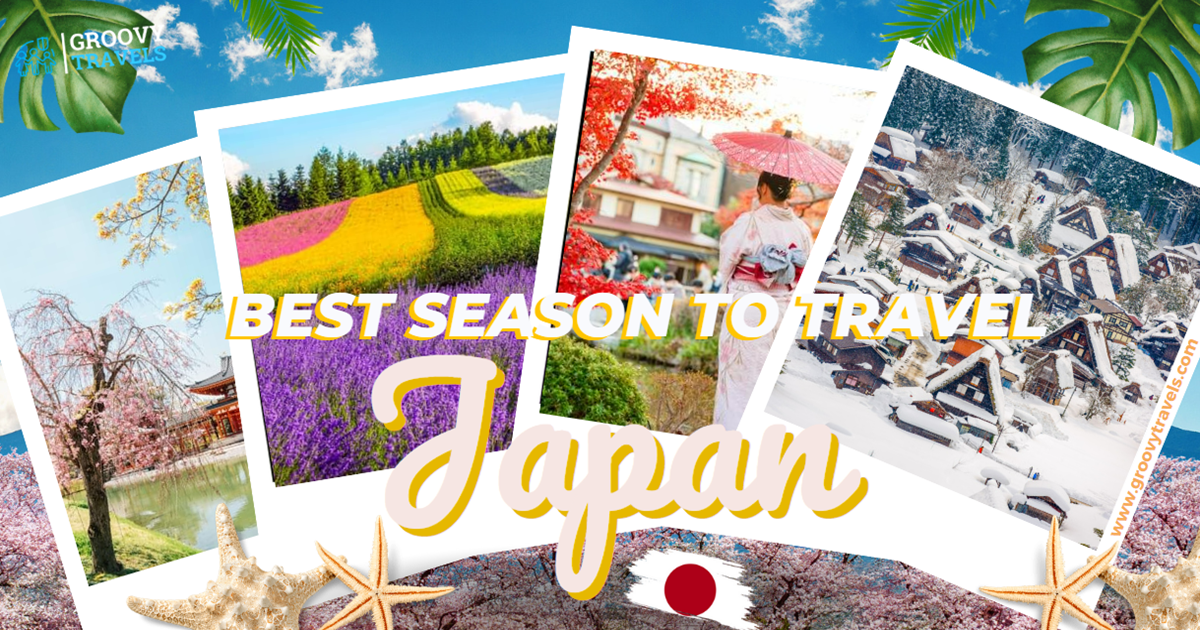Discovering the Best Season to Travel in Japan
Dreaming of exploring the vibrant streets of Tokyo, immersing yourself in Kyoto’s rich history, or experiencing the tranquility of Japanese gardens? Japan offers a captivating blend of tradition and modernity, making it a top destination for travelers worldwide. But when is the best time to visit this enchanting country? In this guide, we’ll navigate through the seasons of Japan to uncover the optimal time for your adventure. From cherry blossoms in spring to fiery foliage in autumn, let’s dive into the best season to travel in Japan and discover when to avoid the crowds.
Understanding Japan’s Seasons:
Japan experiences four distinct seasons, each offering unique experiences for travelers. It is a land of ancient temples, futuristic cities, and captivating natural beauty, beckons travelers year-round. But when is the optimal time to explore this enchanting country? We will delve into the four distinct seasons that paint Japan’s landscape and reveal the hidden gems of each. Whether you’re a cherry blossom enthusiast, a snow lover, or simply seeking pleasant weather, we’ve got you covered. So grab your virtual passport, and let’s embark on a journey through Japan’s seasons! Here’s a breakdown of what to expect:
1. Spring: The Blossom Bonanza
Best Months: March to early April
Spring in Japan is truly a sight to behold, as the entire country bursts into bloom with the arrival of cherry blossoms (sakura). These iconic flowers symbolize renewal and fleeting beauty, creating a magical atmosphere that draws visitors from around the world. The cherry blossom season typically begins in late March in the southern regions of Japan, gradually progressing northward over the following weeks. Peak bloom varies depending on the location and weather conditions, so be sure to check the cherry blossom forecasts (sakura-zensen) for the latest updates.
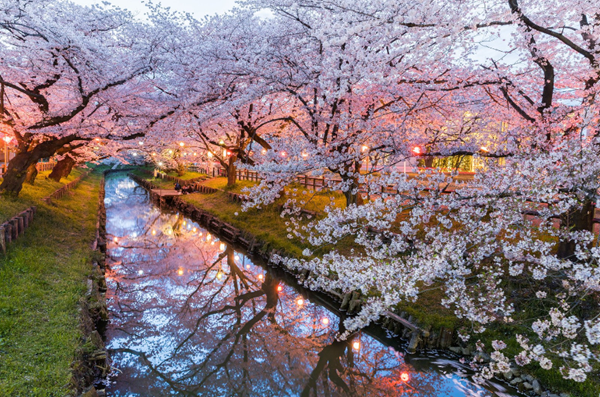
During spring, the weather in Japan is pleasantly mild, with temperatures ranging from 10°C to 20°C (50°F to 68°F) in most areas. This makes it the perfect time for outdoor activities such as hanami (cherry blossom viewing), picnics in the park, and leisurely strolls through historic neighborhoods. In addition to cherry blossoms, you’ll also encounter a kaleidoscope of colorful flowers, including azaleas, tulips, and wisteria, adding to the visual splendor of the season.

While spring offers unparalleled beauty and ideal weather conditions, it’s important to note that it’s also peak tourist season in Japan. As such, popular cherry blossom spots can become crowded with both domestic and international visitors, particularly on weekends and during national holidays. Accommodation prices tend to rise during this time, so booking well in advance is recommended to secure your preferred accommodations at the best rates. Despite the crowds, the enchanting beauty of Japan in the spring is truly worth experiencing firsthand, making it a must-visit season for travelers seeking the quintessential Japanese experience.
2. Summer: Sun, Festivals, and Fireworks
Best Months: June to August
Summer in Japan ushers in a vibrant tapestry of festivals, lush green landscapes, and a myriad of outdoor adventures. However, it’s important to be prepared for the unique challenges posed by Japan’s hot and humid weather during this season.
With temperatures often soaring above 30°C (86°F) and humidity levels reaching upwards of 80%, summer in Japan can be intense, especially for visitors unaccustomed to such conditions. Despite the heat, summer offers plenty of opportunities for exploration and enjoyment. One of the highlights of summer in Japan is the plethora of festivals known as matsuri, which take place in cities and towns across the country. These lively celebrations feature traditional music, dance, food stalls, and colorful processions, providing a fascinating glimpse into Japanese culture and heritage.
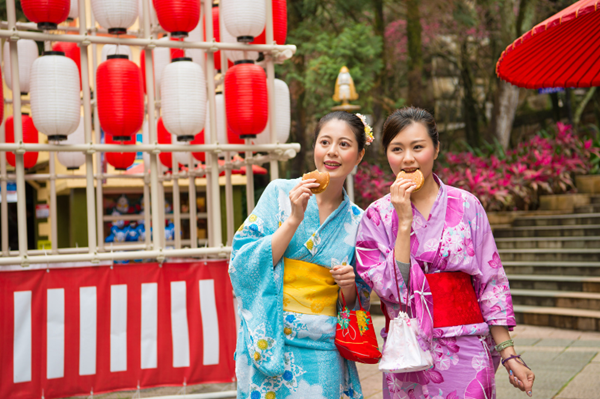
For those seeking respite from the heat, Japan’s coastal regions offer idyllic beach destinations where you can relax on sandy shores and cool off in the refreshing waters of the Pacific Ocean. Popular beach destinations include Okinawa, Miyazaki, and Shizuoka, each offering its own unique charm and attractions.
Summer is also the perfect time for outdoor activities such as hiking, camping, and exploring Japan’s stunning natural landscapes. From the rugged peaks of the Japan Alps to the tranquil forests of Hokkaido, there’s no shortage of breathtaking scenery to discover. Just be sure to stay hydrated, wear sunscreen, and take frequent breaks to avoid heat-related illnesses.

However, it’s essential to be aware of the potential risks associated with summer in Japan, including typhoons. From June to October, Japan experiences typhoon season, during which powerful storms can bring heavy rains, strong winds, and disruptions to travel plans. While typhoons are not as common in mainland Japan as they are in Okinawa and other southern islands, it’s important to stay informed about weather forecasts and follow any advisories issued by local authorities.
Despite the challenges posed by the weather and occasional typhoons, summer in Japan offers a wealth of unforgettable experiences for travelers willing to embrace the season’s vibrant energy and spirit of adventure.
3. Autumn: A Symphony of Colors
Best Months: Late October to November
Autumn in Japan is a symphony of colors, as the country’s landscapes transform into a mesmerizing canvas of reds, oranges, and yellows. The arrival of cooler temperatures heralds the peak of foliage season, known as koyo, when trees shed their green hues and adorn themselves in vibrant autumnal colors. From the northern island of Hokkaido to the southern shores of Kyushu, Japan’s forests and mountains have become a spectacle of natural beauty, drawing photographers, hikers, and nature enthusiasts alike.
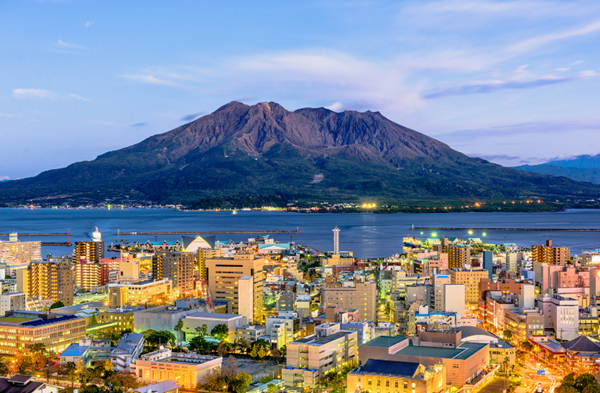
The weather in autumn is cool and comfortable, with temperatures ranging from 10°C to 20°C (50°F to 68°F) in most regions. This makes it an ideal time for outdoor activities such as scenic drives along winding mountain roads, hiking through national parks, and leisurely strolls in picturesque gardens. Popular hiking destinations include the iconic trails of Kamikochi in the Northern Alps, the scenic paths of Nikko National Park, and the rugged terrain of the Kumano Kodo pilgrimage routes.
Autumn is also a season of cultural richness in Japan, with traditional events and festivals celebrating the harvest and the changing of the seasons. From sake festivals to moon-viewing ceremonies, there are countless opportunities to immerse yourself in Japanese culture and traditions. Additionally, autumn is the perfect time to indulge in seasonal delicacies such as chestnuts, persimmons, and matsutake mushrooms, which feature prominently in Japanese cuisine during this time of year.
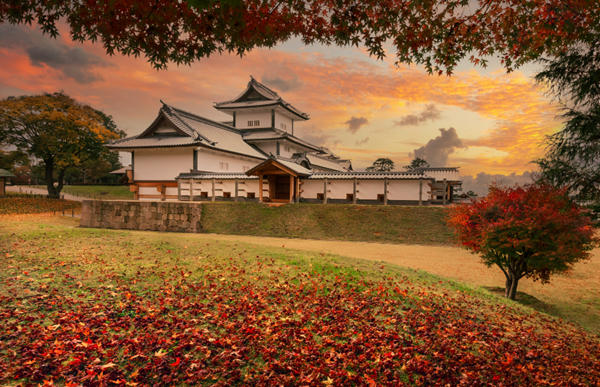
One of the greatest advantages of traveling to Japan in autumn is the relative lack of crowds compared to the peak tourist season of spring. With fewer tourists vying for space at popular attractions, you can enjoy a more relaxed and intimate experience as you explore Japan’s iconic landmarks, temples, and gardens. Whether you’re admiring the fiery foliage of Kyoto’s Arashiyama Bamboo Grove, savoring the serenity of Kanazawa’s Kenrokuen Garden, or embarking on a scenic cruise along Lake Towada, autumn offers endless opportunities for discovery and adventure in Japan.
4. Winter: Snowy Serenity and Onsen Bliss
Best Months: December to February
Winter in Japan casts a magical spell over the country, transforming it into a winter wonderland straight out of a fairytale. From snow-capped mountains to bustling cities adorned with festive lights, Japan offers a myriad of enchanting experiences for travelers during the winter months.
One of the defining features of winter in Japan is the abundance of snow, particularly in the northern regions of Hokkaido and the Japan Alps. Skiing and snowboarding enthusiasts flock to Japan’s top resorts, such as Niseko, Hakuba, and Nagano, to carve their way down powdery slopes and enjoy world-class winter sports facilities. Even if you’re not a winter sports enthusiast, there are plenty of opportunities to embrace the snowy landscapes through activities such as snowshoeing, snowmobiling, and ice skating.
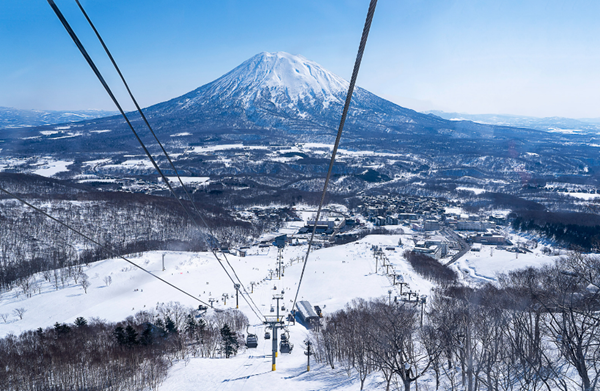
For those seeking relaxation and rejuvenation, winter is the perfect time to indulge in Japan’s famous hot springs, known as onsen. Nestled amidst snowy landscapes, onsen resorts offer a tranquil retreat from the cold, where you can soak in mineral-rich thermal waters while gazing out at snow-covered scenery. Popular onsen destinations include Hakone, Kusatsu, and Beppu, each offering a unique experience with its own distinct thermal properties and bathing traditions.
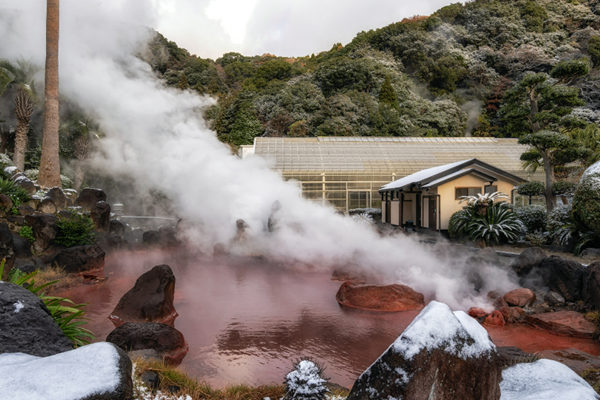
While Japan’s countryside dazzles with pristine snowscapes, its cities come alive with holiday cheer and festive decorations. Tokyo and Kyoto, in particular, are renowned for their dazzling illuminations, with streets, parks, and landmarks adorned in twinkling lights and colorful displays. From festive markets and ice skating rinks to seasonal delicacies such as hot pot (nabe), oden, and steaming bowls of ramen, winter offers a feast for the senses that’s sure to warm the soul.

Despite the chilly temperatures, winter in Japan is a season of warmth and hospitality, where you can embrace the spirit of togetherness and celebrate the joys of the holiday season with friends and loved ones. So bundle up in your coziest layers, sip on a cup of hot tea or mulled wine, and immerse yourself in the magic of winter in Japan.
When to Avoid:
While Japan is a captivating destination year-round, there are certain months to avoid due to extreme weather or peak tourist seasons. By steering clear of these periods, you can ensure a smoother and more enjoyable travel experience. Here’s what to keep in mind:
- Golden Week (Late April to Early May): Golden Week is a series of national holidays that typically spans from late April to early May, including Showa Day (April 29), Constitution Memorial Day (May 3), Greenery Day (May 4), and Children’s Day (May 5). During this time, many Japanese citizens take advantage of the consecutive holidays to travel domestically or abroad, resulting in crowded transportation hubs and popular tourist attractions. As a result, it’s best to avoid traveling to Japan during Golden Week if possible, or plan your itinerary carefully to avoid the busiest days.
- Obon Week (Mid-August): Obon Week, usually occurring in mid-August, is another period of increased travel in Japan. During this time, many Japanese people return to their hometowns to pay respects to their ancestors and participate in traditional ceremonies and rituals. As a result, transportation networks can become congested, and accommodations may be in high demand. If you plan to visit Japan during Obon Week, be sure to book your transportation and accommodations well in advance to secure availability and avoid disappointment.
- Typhoon Season (Summer to Early Autumn): From June to October, Japan experiences typhoon season, during which tropical cyclones can bring heavy rains, strong winds, and potential disruptions to travel plans. While typhoons are not as frequent in Japan as in Southeast Asia, they can still pose a risk to travelers, particularly those engaging in outdoor activities or traveling to coastal areas. It’s important to stay informed about weather forecasts and heed any advisories issued by local authorities. If you’re planning a trip to Japan during typhoon season, consider purchasing travel insurance and having contingency plans in place in case of inclement weather.
By avoiding these peak periods and being mindful of Japan’s seasonal weather patterns, you can maximize your enjoyment of this captivating destination and create unforgettable memories that last a lifetime.
The best season to travel in Japan depends on your preferences
Whether you’re captivated by cherry blossoms in spring, mesmerized by autumn foliage, or eager to experience winter festivities, Japan offers something for every traveler. By understanding Japan’s seasons and knowing when to avoid peak tourist periods, you can plan a memorable journey filled with cultural discoveries and breathtaking scenery. So pack your bags and get ready to unlock Japan’s magic in the best season for your adventure!
EMP—Europe s largest alternative clothing merchandise store
 EMP distributes a growing range of over 20,000 items to nineteen countries across Europe, leading the way in: alternative fashion, selling items from dozens of top fashion brands, as well as operating six proprietary labels; music merchandise, officially licensed clothing, accessories, gifts, and memorabilia from the world’s top rock, metal, punk, and indie bands; and entertainment merchandise, officially licensed clothing, accessories, collectibles, and gifts from hundreds of top movie, TV, and gaming franchises. For the latest products and exclusive deals, visit emp-shop.pl today!
EMP distributes a growing range of over 20,000 items to nineteen countries across Europe, leading the way in: alternative fashion, selling items from dozens of top fashion brands, as well as operating six proprietary labels; music merchandise, officially licensed clothing, accessories, gifts, and memorabilia from the world’s top rock, metal, punk, and indie bands; and entertainment merchandise, officially licensed clothing, accessories, collectibles, and gifts from hundreds of top movie, TV, and gaming franchises. For the latest products and exclusive deals, visit emp-shop.pl today!




